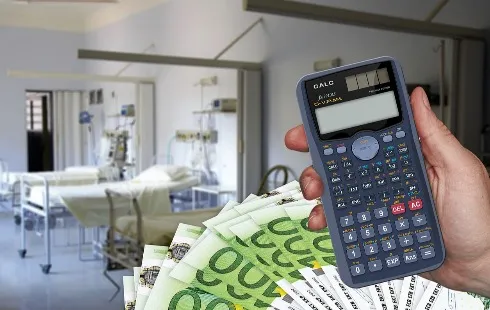
8HoursMining cloud mining platform, daily profits up to $9,337
Section: Business
The price of gold has reached an unprecedented high, exceeding $4,000 per ounce for the first time. This significant milestone reflects a sustained upward trend, with the precious metal appreciating by over 50% in the past year alone. Investors are closely monitoring the factors contributing to this surge, as gold outpaces other traditional and alternative investment assets.
Multiple Factors Fueling Increased Demand
The continued rise in gold's value is the result of a complex interplay of economic, political, and financial factors. Recent political uncertainties, such as fiscal disputes in the United States and escalating sovereign risks in Europe, have prompted a shift toward assets perceived as safe havens. In times of instability, gold remains a preferred choice for investors seeking to mitigate risk.
Monetary Policy and Central Bank Purchases
Expectations of potential interest rate reductions in the United States have further stimulated demand for gold. Lower interest rates can diminish the appeal of interest-bearing assets, making non-yielding assets like gold more attractive. In addition, central banks worldwide have substantially increased their gold reserves, aiming to diversify away from the US dollar and enhance economic security. This trend is particularly evident among emerging economies and nations subject to international sanctions.
Currency Fluctuations and Inflation Concerns
The weakening of the US dollar has made gold more accessible to investors outside the United States, further driving up demand. Additionally, persistent inflationary pressures have reinforced gold's reputation as a reliable store of value. During periods when inflation outpaces nominal interest rates, traditional savings instruments may lose purchasing power, whereas gold has historically maintained its value in such environments.
Market Impact and Consumer Behavior
The surge in gold prices is affecting various sectors, including the jewelry industry and retail markets. Businesses are adjusting prices to reflect higher material costs. Despite elevated prices, consumer interest in gold products remains robust, with little evidence of a shift toward lower-quality alternatives or other metals. The demand for gold-backed exchange-traded funds (ETFs) and physical gold purchases continues to be strong, especially among private investors.
Silver and Other Precious Metals Also Rising
The rally in precious metals is not limited to gold. Silver prices have also experienced substantial gains, reaching new highs alongside gold. While silver remains significantly less expensive per ounce, its upward trajectory mirrors the broader movement in the precious metals market, fueled by similar economic and geopolitical dynamics.
Comparative Performance With Other Assets
Gold's rate of appreciation has outperformed most asset classes this year, including other commodities and digital currencies like Bitcoin. Although Bitcoin has benefited from geopolitical tensions, its gains have not matched those of gold during the current period of uncertainty.
Outlook for Gold Prices
Market analysts widely anticipate that the upward momentum in gold prices may continue, particularly if central banks proceed with further interest rate reductions. The prospect of continued global economic and political uncertainty is likely to sustain demand for gold as a safe haven asset. Forecasts suggest that the price could reach even higher levels in the coming year, contingent on monetary policy decisions and investor sentiment.

Section: Business

Section: Arts

Section: Politics

Section: Health Insurance

Section: News

Section: News

Section: News

Section: Arts

Section: News

Section: Arts
Health Insurance in Germany is compulsory and sometimes complicated, not to mention expensive. As an expat, you are required to navigate this landscape within weeks of arriving, so check our FAQ on PKV. For our guide on resources and access to agents who can give you a competitive quote, try our PKV Cost comparison tool.
Germany is famous for its medical expertise and extensive number of hospitals and clinics. See this comprehensive directory of hospitals and clinics across the country, complete with links to their websites, addresses, contact info, and specializations/services.
Curated by Fried Dähn and Thomas Maos, this event is part of the Sonic Visions series, featuring an engaging performance that intertwines sound, music, and visuals. This edition presents THE WATS, a narrative where three travelers in the desolate, apocalyptic landscapes of New Zealand encounter a...



No comments yet. Be the first to comment!